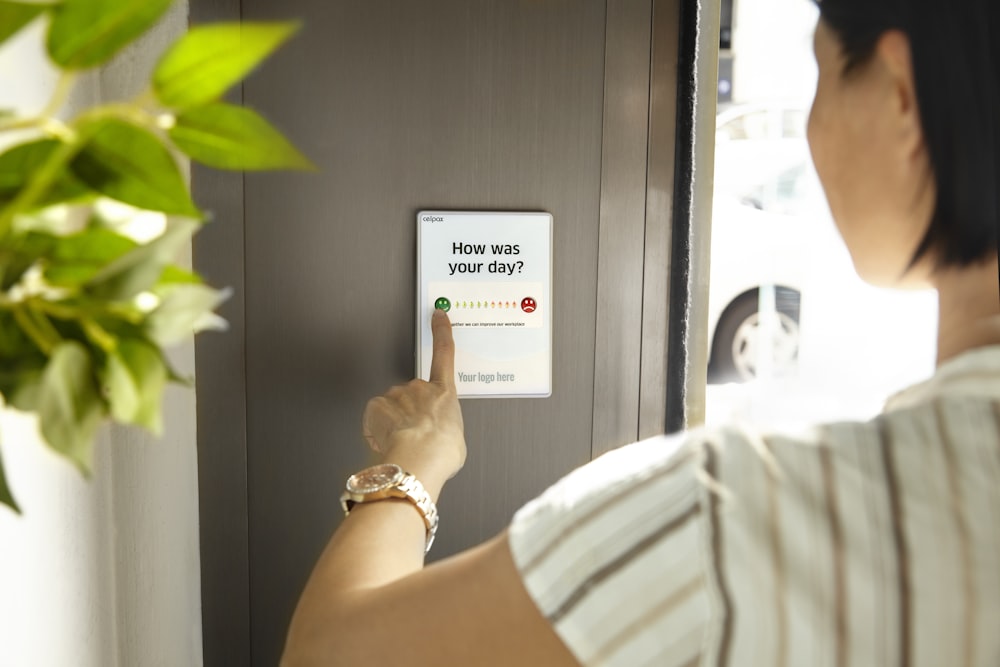4 Ways: Find Out Whether Your Employees Are Genuinely Happy

Photo by Christina @ wocintechchat.com @ unsplash
When employees are happy at work, they tend to be more focused, efficient, and productive. So, employee happiness is important for both them and the company they work for.
Finding out whether your employees are genuinely happy at work may be easier said than done, though. After all, workers could give the impression that they’re happy even when they’re not.
So, check out the following four ways of finding out whether your employees are genuinely content at the workplace.
1. Conduct Employee Satisfaction Surveys
To gauge whether your employees are happy, you can simply ask them. By fostering a company culture of transparency, feedback, and communication, you can make sure your employees feel comfortable in talking to you about their feelings and any issues they may have at the workplace.
However, even in an open company culture environment, some employees may not want to rock the boat by speaking frankly.
After all, employees who are honest in their feedback could fear repercussions from their employers.
They won’t want to feel singled out. Nor will they want to feel like they’re stirring up turbulent relationships with their managers and employer. They may even mistakenly believe their feedback will result in a dismissal.
And such feelings can cause employees to be less productive and more stressed at the workplace.
To get around these problems, it’s always a good idea to enable your employees to provide anonymous feedback.
One of the best and easiest ways of doing that is to conduct employee satisfaction surveys through an employee engagement platform such as Jotform Survey Maker. You can then find out what your employees like and dislike about their roles and your company, and learn how happy they are in their positions.
You can use specialised software that makes it simple for employees to provide anonymous feedback. Your employees could simply use a designated button for anonymity.
With the right software, you can also drill down into employee satisfaction further. For instance, you can use surveys to measure satisfaction in specific areas, such as co-worker relationships, management expectations, stress levels, and career progression expectations.
When designing survey questions, include both open-ended questions and multiple-choice questions. That will enable you to gather qualitative and quantitative data. The former refers to reports that contain casual or anecdotal observations while the latter is based on statistics.
After extensive analysis, employers can use both sets of data to make appropriate decisions and take action.
For example, qualitative data could lead employers to change rosters to ensure the best teams are working together while quantitative data could be used to make production methods more efficient.
You could also consider doing monthly surveys that cover a specific topic, such as teamwork, communication, or growth opportunities.
However, you should ensure the surveys are succinct and you should provide your employees with a designated time to complete them, as your workers will be busy.
So, although you can accumulate useful data from surveys, be wary of asking too many questions, as asking your employees to spend time completing the survey could end up being counterproductive.
2. Check Out Reviews of Your Company
Even when you conduct anonymous employee satisfaction surveys, employees could still hold back about how they really feel about your company and their job duties and responsibilities.
For instance, if employees make specific negative comments, even with anonymity, they could fear that their managers and employer will know they’re the ones who made the comments.
To get completely genuine views from your employees, check out an employer review site like jobsage.com, where employees of companies give honest feedback about what it’s really like to work for their employers.
With such honest feedback and constructive criticism by the employees, you or your HR team has the opportunity to take specific measures to improve the issues. Alternatively, you may wish to simply use the feedback to gauge the sense of work culture in your company.
3. Have One-on-one Meetings
While anonymity via surveys and review platforms enables you to access reliable and genuine feedback from your employees, face-to-face meetings also have their place.
By conducting one-on-one meetings in which you encourage open communication, you can get to know the needs and concerns of specific employees.
However, also remember that this may have the opposite effect. Some people avoid confrontation and maintain their façade of a satisfied worker bee.
Make sure the meetings are held regularly, such as bi-monthly or monthly, so that any new concerns can be raised and talked through.
Also, consider adopting a system for employees to provide feedback about urgent matters. It’s best to not wait to find out about urgent issues until the monthly discourse is open.
At one-on-one meetings, you should talk about things like the employee’s current emotional state, his or her performance and progression, and any obstacles that are preventing the employee from attaining his or her goals.
It could be useful to ask questions like:
- Do you have any concerns regarding your career opportunities?
- Are your job expectations realistic?
- What keeps you engaged and inspired to do your job?
- Do you have everything you need in order to complete all of your assigned tasks?
- Is there a task or activity you want to spend more time on?
- Is there anything you believe the company isn’t doing well, and do you have any suggestions for improvements?
- If you could change anything about your role or the company, what would it be?
Supplementary reading: Don’t Confuse Meetings with Collaboration
4. Assign Employees New Tasks and Monitor Their Responses
It can be helpful to occasionally put your employees to the test to find out whether they really are as happy as they seem during one-on-one meetings.
To accomplish that, periodically assign an employee a new task that requires him or her to put in more effort than he or she is required to do for daily tasks.
If the employee is enthusiastic about your request, it’s more than likely that the employee is someone who is motivated and committed to your company. On the other hand, if the request is met with a lack of motivation or even resentment, it’s a good indicator that the employee is generally not happy at work.
However, bear in mind that some employees could simply be doing their jobs because the task was requested of them, regardless of whether they enjoy it or not. At the end of the day, they are getting paid.
But when you use new assignments to gauge employee responses in collaboration with the other methods outlined here on how to get genuine feedback, you can get a better overall picture of your employees’ happiness.
Summing Up
When you put in the effort to find out whether your employees are happy, you will have already gone some way to improving happiness at the workplace. Fostering a communicative and open company culture is a great way of ensuring workers are fulfilled in their jobs.
It also shows you are a competent and reliable leader and boss.
Once your employees notice that you are attentive towards their well being in the company, it will enrich their respect for you. It doesn’t hurt to be a diplomatic leader and take care of your employees. After all, they are the backbone of your company.
So, if you want to find out whether your employees are genuinely happy at work, you should:
(1) Conduct employee satisfaction surveys.
(2) Check out employee reviews of your company.
(3) Have one-on-one meetings with employees.
(4) Assign employees new tasks to monitor their responses.
Be sure to check out the media below:
If you want to read more on the topic above, there is a good compilation of articles in this amazing learning app called Necole. Necole is a state of the art learning platform that curates personalised learning just for you. **SPECIAL OFFER - Use this code ABETTERME and get a 5% discount on your subscription to Necole. To find out more about Necole or to subscribe, click here.
Functional
Tags: Be A Leader, Hard Talk, Consultant Corner, Relationships
This article is published by the editors of Leaderonomics.com with the consent of the guest author.









